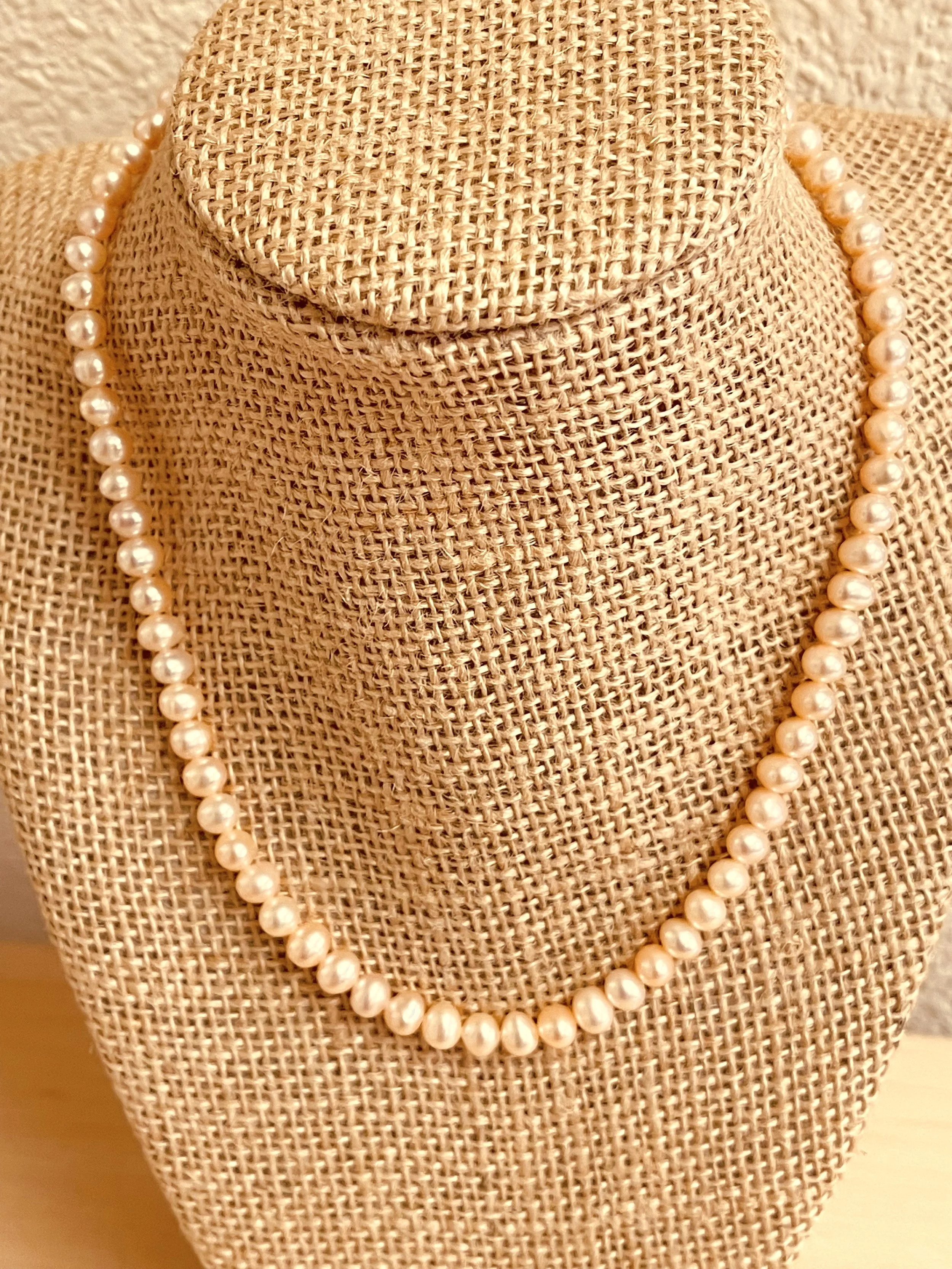Almost Classic , Peach Cultured Pearl necklace
Almost Classic , Peach Cultured Pearl necklace
This is Almost Classic, a Peach Cultured Pearl necklace. It's finished with an adjustable Sterling Silver toggle clasp allowing the length to grow from 16 1/2 inches to 17 1/4 inches! These lovely pearls are nearly round and the color is a delicate peach. They would look great with almost any color!
June's birthstone is Pearl but I believe we can all enjoy and benefit from wearing Pearls!
According to my research, firemountaingems.com states, "Pearls are one of the earliest gemstones found by prehistoric peoples, most likely along the coastline of India. They've been used for personal adornment and coveted by humans throughout the globe for hundreds of thousands of years.
Ancient myths tell of pearls being formed when oysters opened their shells, rose to the water's surface and were seeded by the early morning rays of sunlight and drops of dew. Legends tell of Cleopatra dissolving a pearl in wine or vinegar, and then drinking it, to flaunt her wealth. Western cultures speak of "pearls of great price" and that "the acquisition of wisdom is above that of pearls." In India, the god Krishna plucked the first pearl from the sea for his daughter's wedding jewelry.
The Roman Emperor Vitellius financed an entire military campaign by selling his mother's earrings (hopefully with her permission). Pearls were found clutched in the hands, or hanging from the ears and necks, of the dead at Pompeii and Herculaneum. In Japan, traditional Ama pearl hunters dive 30 feet without breathing equipment--as they have for the past 2,000 years!
Pearls are the gemstone for the western Zodiac sign Cancer, the month of June, and the third wedding anniversary.
Cultured Freshwater Pearls Metaphysical Properties
Some healers use pearls to help balance body rhythms and hormone levels with lunar cycles, and to harmonize human beings with the natural world. The inner glow (orient) of pearls is thought to tap inner wisdom and nurture love. Pearls are also believed to signify innocence and faith.
Practitioners use pearls to enhance personal integrity, bring truth forward, grow sincerity, inhibit immodest behavior and advance in wisdom.
Natural pearls are still ground up and used in medicine and beauty treatments, as they are a source of pharamaceutical calcium and natural iridescence. They are thought to relieve bloating, increase fertility and ease childbirth.
Cultured Freshwater Pearls Geological Properties
Pearls are one of a few natural or organic gemstones (others include coral, amber, jet and mother-of-pearl). Produced by the pearl oyster and the freshwater pearl mussel, natural pearls are a small irritant within the oyster or mussel which has been coated with nacre to reduce that irritation. Concentric layers of nacre (composed mostly of the mineral aragonite) create the subtle iridescence and illusion of visual depth in pearls (called "pearlescence").
Natural or "wild" pearls are rare and valuable so most pearls today are cultured. Saltwater and freshwater mollusks are collected and a small shell bead placed inside. Saltwater oysters can usually only generate a single cultured pearl at a time, while the much larger freshwater mussels can produce up to 20--which is why freshwater pearls are much less expensive. The mollusks are then returned to the water where they make the pearl. Layers of calcium carbonate are secreted, coating the piece of shell, to form a spherical, oblong or irregular-shaped (or "baroque") pearl. It takes roughly 3 to 7 years for mollusks to produce a single pearl. The color of the pearl varies depending on the type of mollusk. (The oysters and mussels that make the pearls are not related to the edible varieties of oysters and mussels.)"







